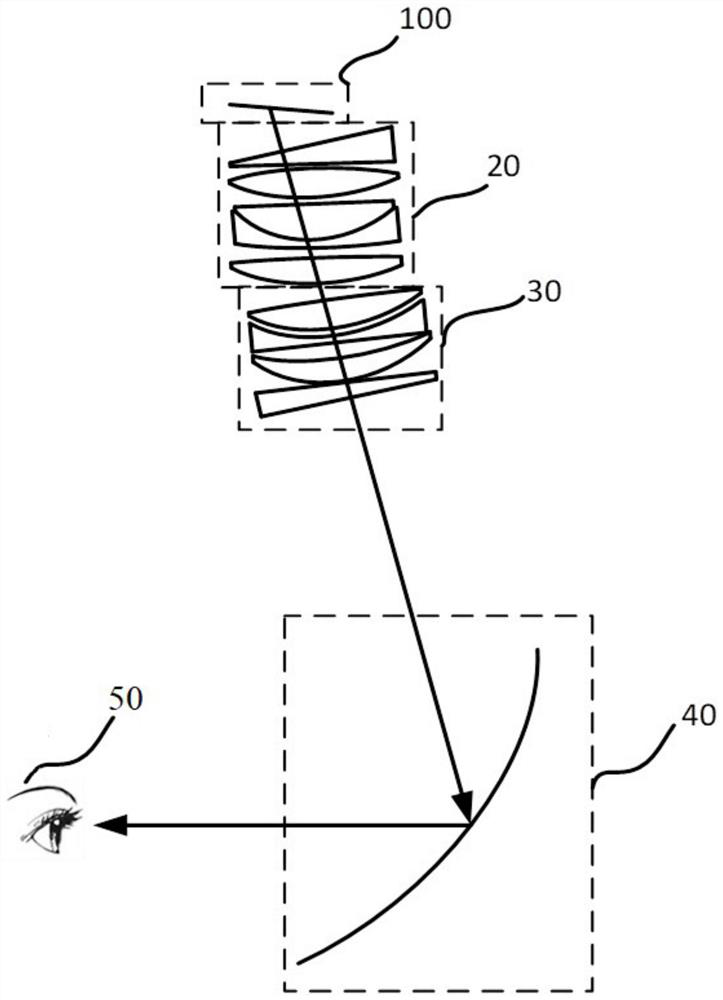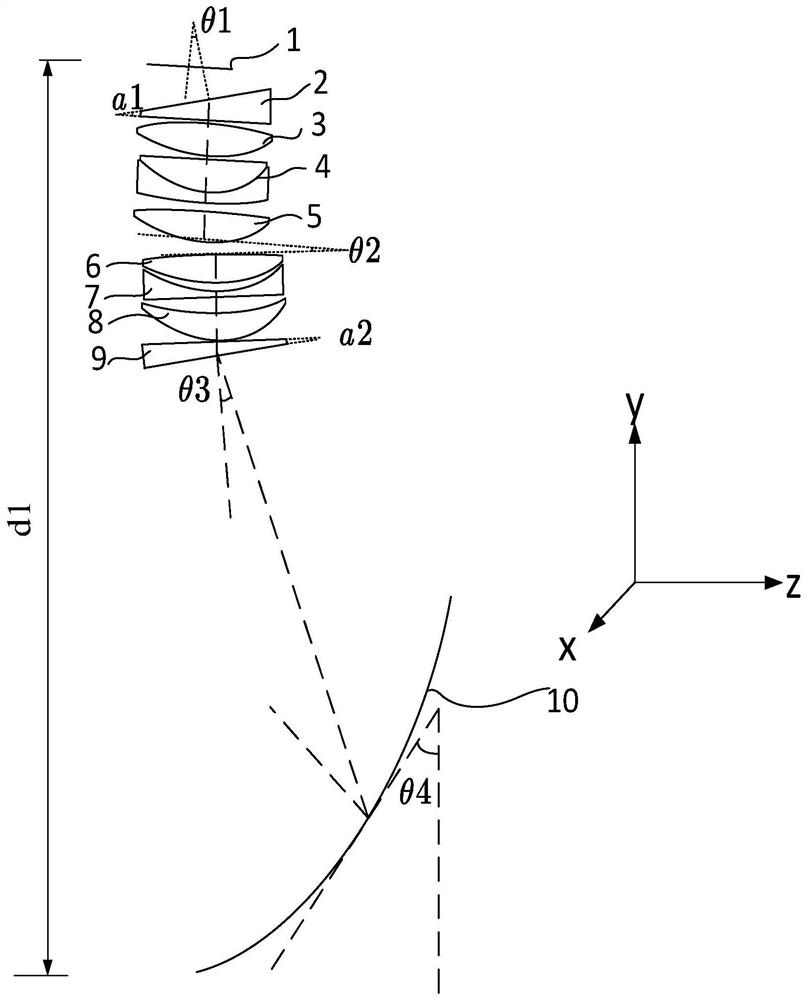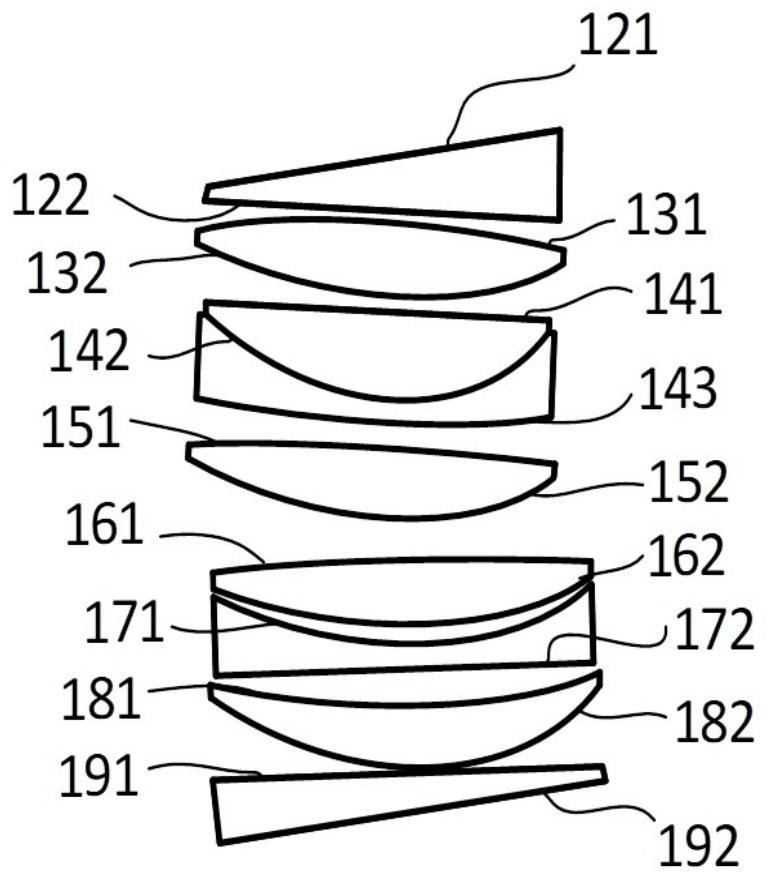Off-axis optical module and head-mounted display device
An optical module, off-axis technology, applied in the direction of optics, optical components, instruments, etc., can solve the problems of structural interference, increase the difficulty of design and manufacturing, waste of lenses, etc., and achieve the effect of large magnification
- Summary
- Abstract
- Description
- Claims
- Application Information
AI Technical Summary
Problems solved by technology
Method used
Image
Examples
no. 1 example
[0041] In the first embodiment, the structure of the off-axis optical module is as figure 2 As shown, it includes image source 1, first wedge prism 2, first lens 3, positive-negative doublet lens 4, second lens 5, third lens 6, fourth lens 7, fifth lens 8, second Wedge prism 9 and curved mirror 10.
[0042] Wherein, the first wedge prism 2 , the first lens 3 , the positive-negative doublet lens 4 , and the second lens 5 form the first lens group 20 . The mechanical axes (defined as the first axis A) of the first wedge prism 2 , the first lens 3 , the positive-negative doublet lens 4 , and the second lens 5 coincide and are arranged coaxially.
[0043] The first lens group 20 may be a group of coaxial spherical, cylindrical, aspheric, and free-form lenses. Preferably, in order to effectively correct the system chromatic aberration, the first lens group 20 includes a positive-negative doublet lens. Preferably, in order to correct high-order aberrations, a convex lens with as...
no. 2 example
[0056] Such as Figure 4 The shown off-axis optical module includes an image source 1, a first wedge prism 2, a first lens 3, a positive-negative doublet lens 4, a second lens 5, a third lens 6, a fourth lens 7, a first Five lenses 8, reflecting mirrors 11 and curved mirrors 10.
[0057] Wherein, the first wedge prism 2 , the first lens 3 , the positive-negative doublet lens 4 , and the second lens 5 form the first lens group 20 . The mechanical axes (defined as the first axis A) of the first wedge prism 2 , the first lens 3 , the positive-negative doublet lens 4 , and the second lens 5 coincide and are arranged coaxially.
[0058] The first lens group 20 may be a group of coaxial spherical, cylindrical, aspheric, and free-form lenses. Preferably, in order to effectively correct the system chromatic aberration, the first lens group 20 includes a positive-negative doublet lens. Preferably, in order to correct high-order aberrations, a convex lens with aspheric surfaces is se...
PUM
 Login to View More
Login to View More Abstract
Description
Claims
Application Information
 Login to View More
Login to View More - R&D
- Intellectual Property
- Life Sciences
- Materials
- Tech Scout
- Unparalleled Data Quality
- Higher Quality Content
- 60% Fewer Hallucinations
Browse by: Latest US Patents, China's latest patents, Technical Efficacy Thesaurus, Application Domain, Technology Topic, Popular Technical Reports.
© 2025 PatSnap. All rights reserved.Legal|Privacy policy|Modern Slavery Act Transparency Statement|Sitemap|About US| Contact US: help@patsnap.com



